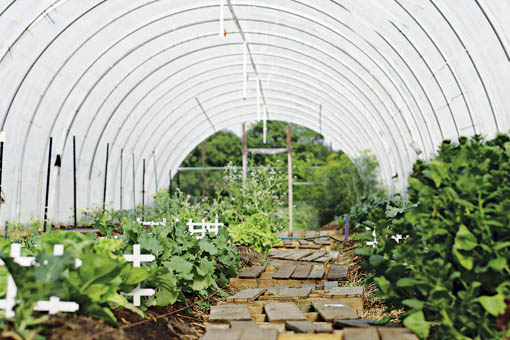Two to three days a week a bright green repurposed Washington Post truck roams the streets of northeast Baltimore. But instead of newspapers, it is delivering fresh fruit and vegetables.
The produce is grown in the same neighborhood where it is consumed—on a six-acre “urban production farm” in Clifton Park. Through this mobile farmers’ market, the Real Food Farm offers inner city residents wholesome, seasonal organic fruits and vegetables at affordable prices.
The farm began in 2009 as a project of Civic Works, Baltimore’s service corps. Recognizing that neighborhoods in northeast Baltimore were “food deserts”—places where groceries were hard to access, and fresh, affordable local produce was non-existent—Civic Works partnered with the Center for Design Practice at the Maryland Institute College of Art to design a food truck that could make produce more accessible for low income residents.
Two years later, the mobile market— which doubles as an educational tool, teaching schoolchildren about urban agriculture and nutrition—hit the streets. And residents don’t have to wait for scheduled house calls: they can flag down the truck any time on the street.
Acknowledging the limited resources of the mobile market’s consumers, prices are around 50 cents lower than typical farmers’ markets, and government food assistance programs are honored. A grant from the Farm Alliance of Baltimore City allows the market to offer a “Double Your Dollars” program giving customers $10 worth of produce for every $5 dollars spent. The mobile market frequently sells out of its daily produce.
According to Shelley White, the program coordinator for the Real Food Farm, the overwhelming demand for the mobile market has led local farms to supplement the Real Food Farm’s inventory. “The hope is to […] expand to other parts of the city. There are many neighborhoods that lack access to healthy, locally grown food; the challenge is having enough produce to serve them,” White says.
View a video about the Real Food Farm’s collaboration with the Maryland Institute College of Art.





